So many people are looking for an analogy productivity system to support their mission of personal development. Oftentimes, we realize that living in the digital space too much derails our attentive, focused pursuit of our personal-development goals. We envision the version of ourselves we would like to become, but apps, websites, and TikTok videos keep pulling us off the path. It makes all the sense in the world to move our productivity offline. However, which analog productivity tool is best? Below you'll learn why and how to use your Everbook for personal development.
Digital Productivity Options
Ever tried to learn to code? You'll find that software-development students often build a To-Do List App as one of the first steps to mastering their craft. It's no surprise to find a multitude of these available. Below are a few of the places you might be tempted to park your personal-development strategies.
To-Do List Apps
Digital productivity apps like Todoist, Asana, and Trello offer structured ways to plan and track personal growth. Todoist excels at task management, letting users break goals into actionable steps with deadlines. Asana provides visual project tracking, making it easy to organize long-term strategies. Trello uses a flexible board system, helping users map out progress in a clear, drag-and-drop format. These tools help users build organized, goal-oriented plans.
People gravitate toward these platforms because they sync across devices and provide instant access to plans. Automation features remind users of deadlines, ensuring tasks don’t slip through the cracks. Collaboration tools allow mentorship or accountability partnerships, enhancing motivation and follow-through. With built-in analytics, users can measure progress, spotting patterns in their habits. These features create a sense of control, making it easier to stay on track.
Habit-Tracking Apps
Mobile apps like Habitica, Streaks, HabitKit, and Loop help users build consistency in their personal development goals. Habitica gamifies productivity, turning tasks into a role-playing game with rewards and consequences. Streaks, exclusive to iOS, encourages habit formation by tracking daily progress in a sleek, customizable interface. Loop, a top choice for Android users, uses data-driven habit tracking to reinforce long-term behavior change. These apps transform self-improvement into a structured, engaging experience.
People choose mobile habit trackers because they provide instant feedback and motivation. Push notifications keep users accountable, reminding them to complete daily habits. Many apps include data visualization, showing progress through charts and streak counters. Features like milestone celebrations and habit-building insights create positive reinforcement. With these tools, users feel guided and encouraged every step of the way.
The Pitfalls of All Digital Solutions
Despite their benefits, digital apps can become distractions instead of enablers. A quick check-in on tasks often leads to mindless scrolling on other sites. Notifications, updates, and online temptations pull users away from deep, focused work. Many people feel overwhelmed by the constant connectivity and long for a simpler, distraction-free system. This is where an analog tool like Everbook provides a powerful alternative.
Additionally, mobile apps come with the same digital pitfalls as web-based platforms. A quick glance at a habit tracker can lead to endless phone distractions. Social media, news updates, and other apps compete for attention, reducing focus and mindfulness. Many users find themselves more engaged with their screens than their personal growth. Switching to an analog system like Everbook eliminates these distractions, fostering deeper focus and intentionality.
Context Switching
Context switching occurs when the brain shifts focus from one task to another, forcing it to recalibrate and refocus. Each switch requires mental energy, causing cognitive fatigue and reducing efficiency. Even brief interruptions, like checking a notification, can break concentration and make it harder to regain deep focus. The more often someone switches contexts - especially between unrelated tasks - the more mental effort it takes to stay productive. Over time, constant switching drains energy, slows progress, and diminishes the quality of work. Analog systems like Everbook help minimize these distractions, allowing for sustained focus and deeper engagement with personal development.
What we call "multitasking" is really just rapid context switching, forcing the brain to jump between tasks rather than handle them simultaneously. Each switch disrupts focus, requiring mental effort to reorient and continue working effectively. This process quickly drains cognitive resources, leading to fatigue, mistakes, and slower progress. Even seemingly simple shifts, like glancing at a phone during deep work, can derail concentration and make it harder to regain momentum. The more we attempt to "multitask," the more exhausted and inefficient we become. Analog systems like Everbook help eliminate these constant mental shifts, allowing for deeper focus and sustained personal growth.
Digital Solutions: The Cost is Too Low
The digital world makes context switching feel effortless, but that illusion comes at a high cognitive cost. On a single screen, productivity apps sit next to emails, social media, and work documents, inviting constant task-hopping. With just a tap or click, we can jump from setting goals to replying to messages, then skim an article before scrolling through TikTok -all in seconds. Because these shifts require no physical effort, we assume they demand little mental energy. But beneath the surface, our brains are working overtime, constantly reloading new information, suppressing previous thoughts, and trying to keep up with the rapid transitions. This invisible strain accumulates, leaving us mentally drained without realizing why.
The problem is that our brains aren’t designed for seamless task-switching. Every shift forces the mind to reestablish context -retrieving where we left off, recalling necessary details, and suppressing distractions from the previous task. Even if each switch feels minor, the cumulative effect is massive. Studies show that it can take several minutes to fully regain deep focus after even a short interruption. Yet, in a digital space where distractions are everywhere, we rarely give ourselves those minutes. Instead, we keep jumping, mistaking busyness for productivity, all while exhausting our cognitive resources. Alternatively, analog systems like Everbook create natural friction, discouraging rapid task-switching and allowing the brain to stay in a deeper, more sustainable state of focus.
Analog Solutions: The Cost is Too High
Analog productivity systems solve the problem of excessive context switching, but they introduce a new challenge: the cost of switching contexts is often too high. In a notebook-based system like a Bullet Journal, finding the right page for a to-do list or important notes requires effort. Users must flip through pages, consult an index, or rely on memory to track down what they need. Unlike digital tools with instant search functions, paper-based systems make it harder to jump between tasks quickly. While this can help with deep focus, it can also make users resistant to switching contexts when necessary, leading to stagnation.
Many people abandon tasks or forget important details simply because retrieving them feels like too much work. If an action item is buried in a past entry, the brain naturally deprioritizes it in favor of what’s immediately visible. Over time, unfinished projects and personal development goals fade into the background, not because they aren't important, but because the mental effort to resurface them feels too high. Listen to Bryan Wolfmueller, the inventor of the Everbook, discuss this problem in why he decided to leave his Bullet Journal behind to use his Everbook full-time:
Everbook Solution: The Cost is Just Right
When moving to an Everbook for personal development, your tasks and goals exist on paper. There are no emails. There are no notifications. Most importantly, there are no TikTok videos! Instead, you only have the goals, plans, and tasks you put into them. The cost of context-switching is high enough to help you stay present and engaged while you work on yourself.
At the same time, the Everbook introduces a level of flexibility that's not available in a traditional notebook (or even in 3-ring binders). All of your information lives on loose-leaf pages. Move these to the top of the book when you need them and just as easily park them in the back. In this way, You eliminate the need to create a complicated indexing system.
Using an Everbook for Personal Development
Everbook is the ideal productivity system for personal development because it offers both structure and flexibility without the distractions of digital tools or the rigidity of bound notebooks. One way to use Everbook is by creating a dedicated Personal Development bundle. Inside, users can organize folders for each area of self-improvement -such as fitness, finance, learning, leadership, or spiritual growth. Each folder holds loose-leaf pages with details, action plans, and progress tracking. This setup keeps everything organized while allowing for easy adjustments. If a new idea emerges or a goal shifts, users can simply add, remove, or rearrange pages without disrupting the entire system.
Alternatively, personal development can live inside a larger Projects bundle, coexisting with other life and work priorities. In this setup, a single folder - or multiple folders - houses personal growth goals alongside work projects, home management, and creative pursuits. When it's time to focus on self-improvement, the relevant pages can be pulled forward without losing sight of everything else. The loose-leaf nature of Everbook prevents ideas from being trapped or forgotten, making it easy to revisit, refine, and act on self-improvement goals when the time is right. This balance of order and adaptability makes Everbook a powerful tool for intentional, distraction-free personal growth.
Productivity Frameworks
Deciding how to organize your Everbook can feel overwhelming, which is why using a proven productivity framework can provide a solid foundation. Rather than inventing a system from scratch, leveraging expert-designed methods ensures efficiency, clarity, and long-term sustainability in managing personal development and productivity.
Getting Things Done
The Getting Things Done (GTD) method, created by David Allen, is a powerful system for organizing tasks and ideas, making it a perfect fit for an Everbook setup. The first GTD principle, Capture Everything, is easily implemented by keeping a dedicated Inbox section in your Everbook. Loose-leaf pages allow you to jot down personal-development ideas, goals, and insights as they arise, ensuring nothing gets lost or forgotten.
Next, the Clarify and Organize steps translate well into Everbook’s flexible folder system. Once captured, personal-growth tasks and projects can be sorted into folders like “Next Actions,” “Projects,” and “Someday/Maybe.” This prevents overwhelm by keeping only actionable items in focus while long-term aspirations remain accessible but unobtrusive. A Weekly Review section ensures you regularly check progress and make adjustments as needed.
Finally, GTD’s Engage principle becomes seamless with Everbook’s adaptability. When it’s time to focus on personal development, you can pull forward only the relevant pages, eliminating distractions and reinforcing deep work. Unlike bound notebooks, an Everbook setup evolves with you, making it the ideal tool for applying GTD principles to lifelong learning and self-improvement.
The 12 Week Year
The 12 Week Year method, developed by Brian Moran and Michael Lennington, focuses on setting and achieving goals within a 12-week timeframe instead of a year. In an Everbook, this principle can be implemented by creating a dedicated section for your 12-week goals, breaking them down into clear, actionable steps. Loose-leaf pages allow you to outline the specific objectives you aim to achieve within the next 12 weeks, providing clarity and focus.
The next step, Weekly and Daily Planning, fits naturally into the Everbook's flexible structure. You can create a section to track weekly goals and daily tasks that align with your 12-week objectives. Using separate pages for each week allows for a more fluid approach—tracking progress, adjusting strategies, and ensuring you stay on track without the rigidity of a pre-set layout.
Finally, Measuring and Accountability becomes effortless with Everbook’s flexibility. As you review your progress at the end of each week or 12-week period, you can add notes, reflections, and adjustments to your pages. By keeping this system in a physical format, you engage in a more tangible and intentional process of self-assessment, helping you maintain focus and motivation throughout your personal development journey.
Building A Second Brain
Similarly, Tiago Forte’s Building a Second Brain focuses on creating an external system to manage your ideas and tasks. In an Everbook, you can implement the Capture phase by dedicating a section to recording personal-development ideas, insights, and tasks. This keeps your mind clear and ensures nothing important gets lost.
Next, the Organize phase fits perfectly into Everbook’s folder system. Use the PARA method (Projects, Areas of Responsibility, Resources, Archives) to create folders for your personal-growth goals, breaking them into actionable steps. Of course, this structure makes it easy to stay organized and quickly access what’s most relevant.
Finally, the Review and Reflect stages work seamlessly with Everbook’s flexibility. Regularly assess your progress, adjusting your goals and strategies as needed. Conveniently, the loose-leaf format makes it easy to update and refine your system, ensuring your personal-development journey stays on track and adaptable.
What should I work on?
Having the right tools is one thing, but choosing how to implement them is another. Fortunately, tons of experts have already written quite extensively on a whole host of ways someone might improve themselves. Below are several books you might consider as guides or roadmaps for making profess in various areas of life:
The 7 Habits of Highly Effective People by Stephen R. Covey
A must-read for anyone looking to build a solid foundation for personal and professional success. Covey's principles help readers focus on proactivity, prioritizing what truly matters, and developing effective interpersonal relationships. If you're aiming to enhance your productivity, leadership, and self-discipline, this book offers a clear roadmap for transforming habits that lead to lasting effectiveness.
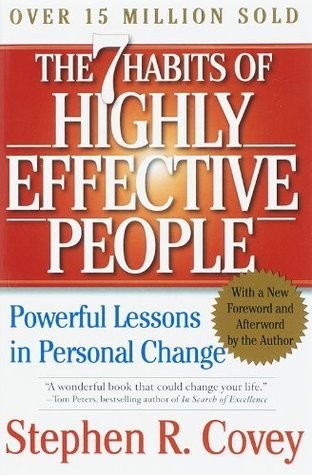
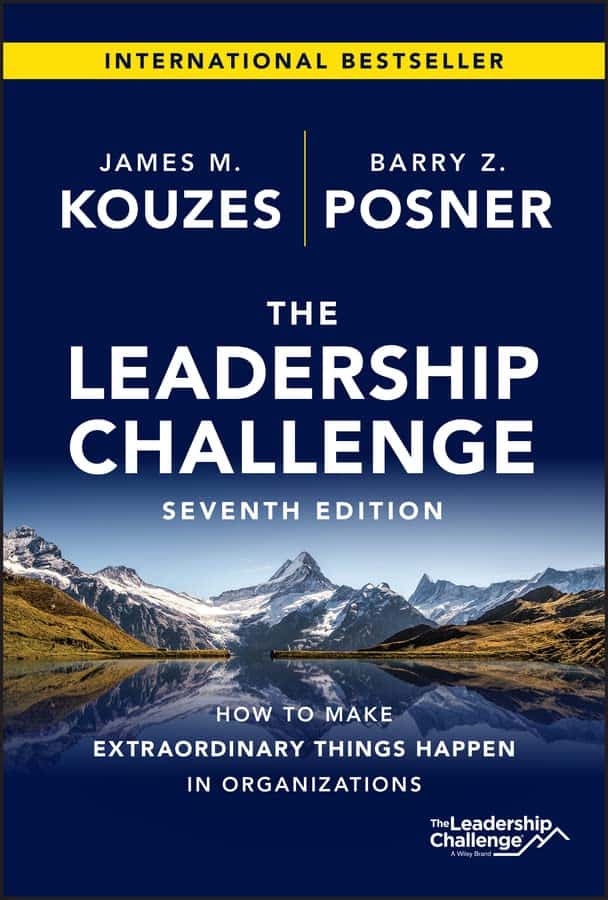
The Leadership Challenge by Kouzes & Posner
A powerful guide for aspiring leaders who want to inspire and influence others with authenticity and integrity. By focusing on core leadership behaviors such as modeling the way, inspiring a shared vision, and enabling others to act, this book helps you develop a leadership style that builds trust and motivates teams. If your goal is to become a more impactful leader, this book provides actionable insights to elevate your leadership capabilities.
The Mindful Attraction Plan by Athol Kay
An excellent resource for anyone looking to improve their relationships, particularly in terms of attraction, connection, and emotional intimacy. Kay uses a unique combination of self-help and relationship advice to help readers develop a mindset that attracts and retains a fulfilling partnership. If you're looking to improve your romantic relationships or personal attractiveness, this book offers practical strategies rooted in mindfulness and psychology.
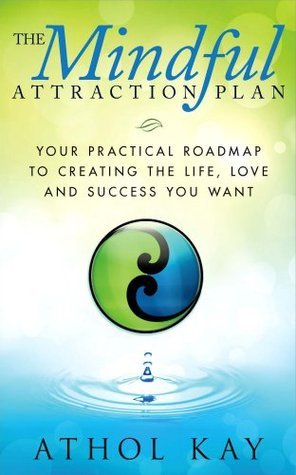
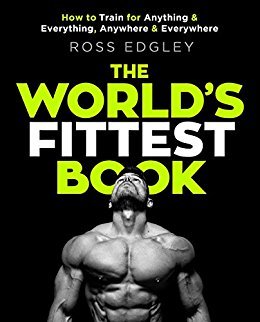
The World's Fittest Book by Ross Edgley
The ultimate guide for those who want to take their physical fitness to the next level. From endurance training to strength-building, Edgley covers a wide range of fitness disciplines, making it the perfect book for individuals aiming to improve overall health, build muscle, and unlock peak performance. If you're committed to becoming stronger, fitter, and more resilient, this book provides the blueprint for pushing your body to its limits.
The Total Money Makeover by Dave Ramsey
A comprehensive guide to taking control of your finances and building lasting wealth. Ramsey's step-by-step plan helps you tackle debt, save for emergencies, and invest for the future. If you're looking to get out of debt and achieve financial independence, this book offers practical, time-tested strategies to transform your financial situation and build a secure future.
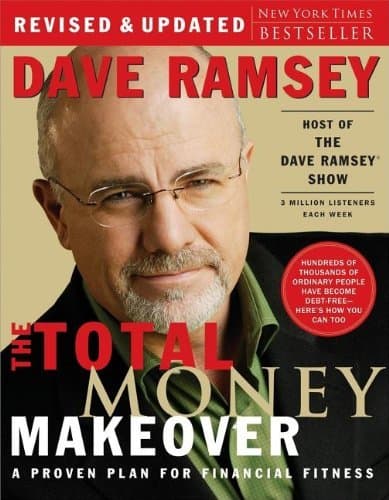
What are you waiting for?
If you’ve spent too much time bouncing between digital to-do lists and bullet journal notebooks, it’s time to make a change. Digital apps like ToDoist or Asana may seem convenient. However, They constantly pull you into the abyss of notifications, tempting you to check social media, emails, or random distractions. Even the Bullet Journal, while effective in theory, can lead to unnecessary time spent flipping through pages. You might waste your valuable attention tracking down where you wrote your last to-do. The constant shifting between tasks in these systems eats away at your focus and drains your mental energy.
An Everbook, on the other hand, provides a streamlined, low-distraction solution that keeps your personal development goals front and center. Its flexible, analog nature allows you to organize your goals, plans, and progress in a way that’s easy to access and adapt as your priorities shift. Everbook empowers you to do the work that matters most. It’s time to ditch the endless to-do list apps and tangled Bullet Journal systems. Get started on your personal development journey today, with an Everbook as your roadmap to lasting growth.




